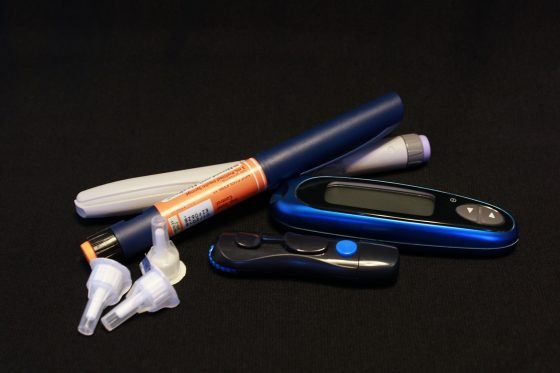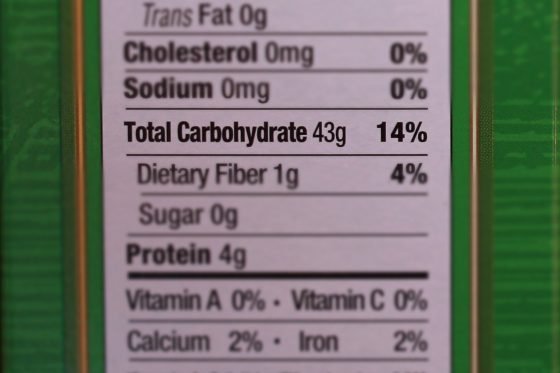Most people have heard of diabetes and understand that it has something to do with how the body metabolizes sugar, but unless you are one of the 10% of Americans who suffer from the disease, that may be where your knowledge of the disease stops.
Though there are actually many forms of diabetes, the two most commonly diagnosed are Type 1 and Type 2. Since misinformation about the differences between these two forms of the disease abounds, today we’ll help you understand the main points that set these two types apart, as well as debunk some common misconceptions about Type 1 diabetes.
What is the difference between Type 1 and 2?
Type 1 diabetes (T1D) is often referred to as juvenile diabetes because it is typically diagnosed between infancy and adolescence, though it can develop at any age and can strike anyone, even those who have no family history of the disease. A T1D person’s pancreas produces little to no insulin, and the body’s immune system sees the insulin-producing cells as foreign bodies and begins to attack and destroy them. A person with T1D must inject insulin multiple times a day… every time they eat and at bedtime… or must use an insulin pump to manage their glucose levels throughout the day. T1D is a life-long diagnosis; there is currently no cure, and people with this disease must manage their glucose levels throughout every single day of their lives.
Type 2 diabetes (T2D) generally develops in people over 40 years of age. A T2D person’s pancreas is still producing insulin, but the body isn’t metabolizing it properly or at all. Though not all people with T2D are overweight, the two leading contributing factors of T2D are obesity and a sedentary lifestyle. A small percentage of pregnant women develop a temporary form of the disease, known as gestational diabetes, which can increase the odds of becoming a Type 2 diabetic later in life, but generally goes away once the baby is born. Sometimes oral medications or insulin is needed to help a person with T2D manage their diabetes, but often, through a healthy diet and exercise, T2D can be managed or even cured.
Both types of the disease require close monitoring of blood glucose levels throughout the day. T1 diabetics need to know their glucose reading prior to eating so that the proper dose of insulin can be administered. This means several finger pricks per day. Close attention to glucose levels is key to maintaining this disease.

What is Insulin?
Imagine your blood cells are tiny little engines that use glucose for fuel to do all of the things that blood cells do. Glucose is produced by your body from the food that you eat. Insulin is the key that opens the door to let glucose into the cell. When a person has T1D, the body isn’t producing any insulin at all, so there is no way for the glucose in the bloodstream to enter the cells. While a T2D person’s body may be producing insulin, for some reason the blood cells aren’t recognizing the insulin as the key that opens the door to every cell, so the glucose stays locked out. In both cases, an increase in glucose in the bloodstream is bad news. Consistently high blood glucose levels can lead to blood vessel and nerve damage throughout the body, as well as kidney disease, vision impairment, and organ damage. Extremely high glucose levels can lead to coma or even death.
Myths About Type 1 Diabetes
Of the over 29 million Americans who are diagnosed with diabetes, only about 4% of those diagnoses are for T1D, and a great deal of these cases are in children and teens. Because of its relatively low prevalence compared to T2D, many people confuse important facts about and differences between the two. Here are some of the most common myths about T1D:

Myth #1: The Person Did Something Wrong
Of every misconception about T1 diabetes, this is probably the most common. A person with Type 1 diabetes did absolutely nothing to bring on this disease. Type 1 diabetes is akin to an autoimmune disease. A person can be going about her business, eating right, exercising daily, and avoiding vices, and still develop the disease. There is currently much debate as to whether genetics plays any role in T1D, as many patients diagnosed have no family history of the disease.
Myth #2: People with T1D Must Never Eat Another Carb
While it is true that people with either type of diabetes must be conscientious about the number of carbohydrates they consume, they do not have to forego carbs forever. Our bodies use carbohydrates for energy by converting them into glucose during digestion. Without carbs, we have to pull from stored energy… our fat stores… in order to function. A person with T1D takes a metered amount of insulin in an injection with every single meal; this allows him to eat a practically “normal” diet, which includes carbs. Every kind of food has what is known as a glycemic index, which is a value assigned to foods that indicates how quickly or slowly they affect a person’s blood glucose levels. An apple has a much lower glycemic index than a piece of candy with the same number of carbohydrates. Diabetics must understand how foods of certain glycemic indexes affect them personally, and then manage their diet by consuming high index foods in moderation only.

Myth #3: T1D Affects Every Person in the Same Way
Just as the flu can have a wide range of effects for different people, so can T1D. Every person is unique in how his or her body responds to the treatment plans for diabetes. For some, maintaining healthy glucose levels is quite simple when they follow a prescribed diet and take the proper dosages of insulin with every meal. For others, it is a fight to determine which foods affect their individual glucose levels adversely, and they must use trial and error to create a sliding scale of insulin dosages for different meals or circumstances. For some, an increase in fiber in the diet is a direct offset to the number of carbs in a meal, but for others, fiber has seemingly no effect on leveling out carbs. Some T1D patients find that moderate exercise will help lower a high glucose reading, while still others find that physical exertion will spike their glucose through the roof. Every person is different, and therefore the disease acts uniquely in each person.
Myth #4: Only Kids Get Type 1 (Juvenile) Diabetes
This is another huge misconception that can sometimes lead to early misdiagnosis in adults. The peak age at which a person is usually diagnosed with T1D is only 14, so it’s easy to assume that if a 45 year old starts exhibiting diabetic symptoms, they must have T2D. Not true. Remember, the key difference isn’t in how the disease presents itself in each type, but in the root cause of each type. A person’s immune system can begin attacking the insulin-producing beta cells at any point in life, leading to T1D.
Myth #5: Type 1 is Curable
The Internet is chock full of helpful information, including recipes, exercise routines, and home remedies of sorts, that can either minimize your chances of becoming a diabetic, or can help you to rid yourself of the disease. These are valid and beneficial suggestions, and if followed, a healthy diet and exercise routine can lower your risk of developing or can help you reverse TYPE 2 DIABETES. Type 1 diabetes is incurable. No prescribed diet, no regular exercise regimen, no essential oil, and no herbal concoction is going to make it go away. Persons with T1D will be forever in need of their glucose meters, testing strips, and insulin pens.
All of the symptoms and side effects of diabetes are identical in both forms. A T1D person has a pancreas that does not produce insulin at all; the diagnosis is for life. A T2D person’s pancreas produces insulin that is not being used effectively; this form can often be reversed through proper diet and exercise, along with medication.
Sources: JDRF, Diabetes Research Institute Foundation, Canadian Diabetes Association
Photo Credits: Cindy Haley









































